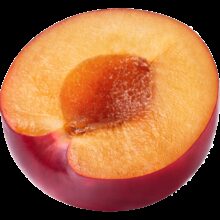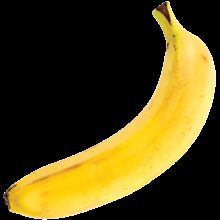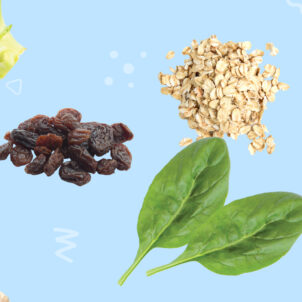

Kate Geagan, M.S., R.D.N.
Dietitian and sustainable nutrition pioneer
During a baby’s first year they will triple their birth weight and increase in length by 50%. To fuel their amazing physical and mental development, eating is a top priority!
To fuel their amazing physical and mental development, eating is a top priority! With tummies too tiny to eat a lot, babies compensate by eating nutritionally rich foods often. Learn about your baby’s nutritional needs during each of the starting solids stages.


To fuel their amazing physical and mental development, eating is a top priority!
Newborn – 4 Months+ | Stage 1
Remember that your baby relies on breast milk or formula as the primary source of nutrition until at least 12 months of age.
At this age, the best and only food for your little one is mother’s milk, infant formula, or a combination of the two. Allow your baby to determine just how much and how often he or she needs to eat. Some babies eat every two hours, day and night; others will go for longer without eating. While in general it’s best to feed your baby ‘on demand,’ for the first few weeks the American Academy of Pediatrics recommends waking your baby every 3-4 hours if he or she is not doing so on their own. Attentive feeding teaches your little one to trust you and lays a healthy foundation for growth with a supportive, loving environment. Always consult your pediatrician with questions on the frequency of breast, bottle, or combination feeding.
On a normal day a newborn may consume an average of 16 to 32 fluid ounces of breast milk or infant formula. You needn’t worry much about what specific nutrients your baby needs. Feeding with breast milk or infant formula is like one stop shopping when it comes to nutrition.4 – 6 Months+ | Stage 2
4 – 6 Months+ | Stage 2
By 6 months, it seems like everything goes into their mouths! Your baby now has a delightfully improved ability to communicate. Communication is important when starting solids. Your baby can show his or her hunger by opening their mouth and leaning towards the spoon. Likewise, your baby will show disinterest by leaning back and pushing away. Your baby can also move food from a spoon to the back of his throat instead of pushing it back out of his mouth with his tongue. Your baby has most likely doubled his birth weight[2].
During these months, most babies are introduced to solid foods, although breast milk and infant formula still largely supply their nutritional needs. You will notice that your baby can now control their head better, suck stronger, and mimic what he or she sees in their surrounding environment. Babies may even exhibit the beginning of a palmer grasp, bringing objects to their mouth to bite.
Remember, the food you offer your baby should be nutritionally and developmentally appropriate. An iron fortified infant cereal, such as Earth’s Best Organic® Whole Grain Oatmeal or Rice Cereal is a good choice for a first food. Establishing babies on an iron-fortified cereal early on will help secure their iron status throughout infancy and toddlerhood, as iron stores present at birth are depleted (by about 4 months) and your baby gradually starts to drink less formula or breast milk. Cereal mixed with breast milk or infant formula also provides a good balance of calories from protein, carbohydrates and fat. Speak to your physician if you feel your child may need additional iron supplementation.
To include vitamins C and A, offer fruit puree like applesauce with added Vitamin C, and a dark green or deep orange vegetable, such as pureed carrots or squash. The Earth’s Best® brand offers wide variety of single ingredient fruits and vegetables to help ensure your baby gets those nutrients. Add foods one at a time, with three days or more in between to help you detect any specific food allergies or sensitivities.
Right from the start, pull your baby’s high chair up to the dinner table so they can enjoy their cereal and vegetables while you eat your dinner alongside them. By the end of this stage, the wider variety of Earth’s Best Organic® Second Fruits, Vegetables, Fruit Blends and Dinners can become part of your little one’s diet.
7 – 9 Months+ | stage 3
The move to solids progresses rapidly now at 7-9 months. Babies begin to chew with an up and down movement of the jaw, replacing the sucking motion. This, combined with the ability to grasp and put food directly into their mouth, tells you to start finger food.
You’ll notice your baby now has the ability to grasp with their palm (e.g. smashing fistfuls of cereal somewhere in the vicinity of his mouth!). To make this easier, carefully choose the shape of the finger foods you offer. Small pieces of peeled soft fruits and cooked vegetables, dry cereal, small pieces of cheese, and cut up noodles are easy for babies to hold. Your baby is practicing motor skills, but don’t count it contributing to nutrient intake. By the end of this stage, your baby’s grasp will become more digital, with the ability to better manipulate smaller foods like green peas. And of course always keep a close eye on your little one.
The next step moves toward thicker, chunkier foods. For this age, try one of Earth’s Best Organic® Chunky Blends such as Tender Chicken & Stars. You can also offer soft mashed, but not strained food as well.
Once your baby is used to getting more nutrition from solids and less from you or from formula, replace nutrients they are no longer receiving from those liquids with foods that offer some protein and calcium.
9 – 12 Months
By now, your baby has mastered the pincer grasp. Your baby can hold and manipulate the bottle; they imitate those around them and prefer chewing instead of sucking. Now they can feed themselves while you watch!
Formula and breast milk will still provide the most nutrition for your baby, but solid food becomes more enticing as your baby transitions to table foods as part of family mealtime together. At this stage, babies eat more protein rich foods like tender, moist cooked lean meats, and chopped egg. Try one of Earth’s Best® third food varieties such as Chicken Pot Pie for high quality protein. If there is no family history of food allergies, try dairy products as part of your baby’s diet.
By the end of the first year, babies should be able to eat most adult foods, assuming the texture and consistency are manageable. Keep an eye out for foods that present a choking hazard, like peanuts, popcorn, whole grapes, hot dogs and raw carrots. Slice hot dogs and carrots lengthwise to reduce choking risk. Watch for foods too thick or sticky to swallow, like gobs of peanut butter on bread or overly thick cooked cereal. Avoid greasy or spicy foods.



